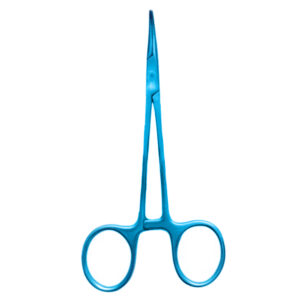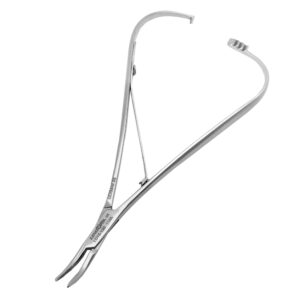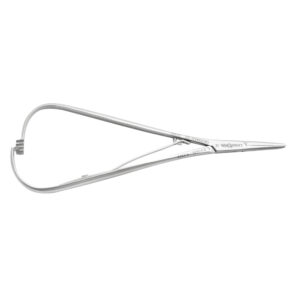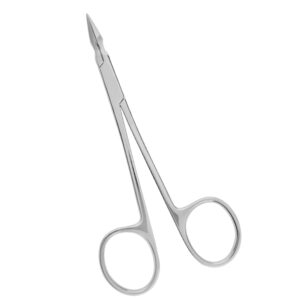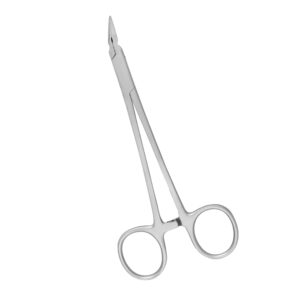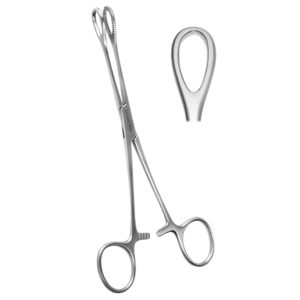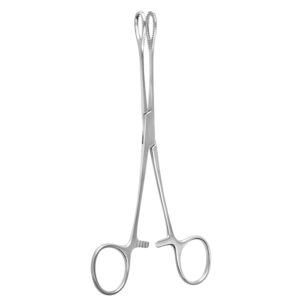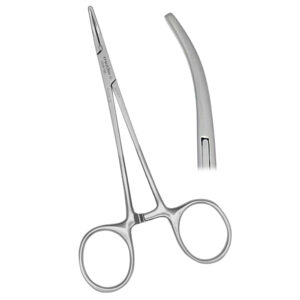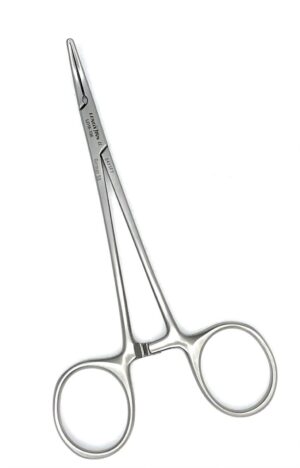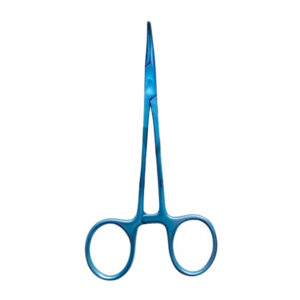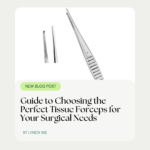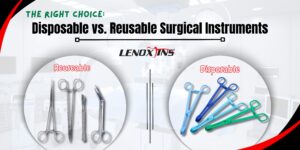Choosing Hemostat Clamps: Key to Vascular Surgery Efficiency
- lenoxinstro
- December 3, 2024
- Dental Instruments, Dental Surgical

Selecting the right hemostat clamps is crucial for effective vascular surgery. Many surgeons face challenges with occlusion and maintaining a clear surgical field, which can impact patient outcomes. In this post, I will discuss the key factors to consider when choosing hemostat clamps, the various types available for vascular procedures, and best practices for their use. By understanding these elements, you can enhance your surgical efficiency and improve patient safety during procedures involving the kidney and other critical areas. Let’s dive into how to make informed choices for your surgical toolkit.
clamps
Understanding Hemostat Clamps in Vascular Surgery
Hemostasis is critical in surgical procedures, particularly in vascular surgery, where managing blood vessels effectively is essential. Hemostat clamps play a vital role in controlling bleeding and preventing embolism during operations involving the thorax. In the following sections, I will discuss common applications of these clamps and how they aid in blood vessel management, including the use of foam and enzyme-based solutions for enhanced outcomes.
The Importance of Hemostasis in Surgical Procedures
In vascular surgery, achieving hemostasis is paramount to ensure patient safety and successful outcomes. Effective management of bleeding not only protects vital organs but also minimizes the risk of complications during procedures. I have found that using high-quality hemostat clamps, particularly those with tungsten tips, enhances grip and precision, allowing for better control over blood vessels. Additionally, incorporating retractors can help maintain visibility and access, further supporting the hemostatic process. Understanding the role of these instruments is essential for any surgical team aiming to improve their techniques and patient care.
Common Applications of Hemostat Clamps in Vascular Surgery
In vascular surgery, hemostat clamps are essential tools for managing bleeding during procedures such as aortic aneurysm repairs and thrombosis interventions. I often utilize these clamps to facilitate coagulation by effectively occluding blood vessels, which helps maintain a clear surgical field. Their design allows for precise control, ensuring that I can manage blood flow efficiently while minimizing the risk of complications, ultimately leading to better patient outcomes.
How Hemostat Clamps Aid in Blood Vessel Management
Hemostat clamps are indispensable in managing blood vessels during vascular surgery, particularly when performing procedures like anastomosis. I often rely on stainless steel clamps for their durability and precision, which allows me to effectively occlude blood vessels while maintaining a clear surgical field. Additionally, when using catheter techniques or during endoscopy, I find that incorporating gelatin-based hemostatic agents can enhance the effectiveness of these clamps, ensuring optimal control over bleeding and improving overall patient outcomes. Hemostat clamps
Factors to Consider When Selecting Hemostat Clamps
When selecting hemostat clamps for effective vascular surgery, I focus on several key factors. First, assessing clamp size and length is crucial for specific procedures, such as coronary artery bypass surgery. I also evaluate the grip and locking mechanisms to ensure reliability during operations. Additionally, the material and durability of the clamps are vital to prevent infection and ensure longevity. Finally, compatibility with my surgical techniques and preferences plays a significant role in my decision-making process.
Assessing Clamp Size and Length for Specific Procedures
When assessing clamp size and length for specific procedures, I pay close attention to the type of forceps I need for the task at hand. For instance, when working with veins, I prefer clamps with longer jaws to ensure I can effectively manage larger vessels without compromising visibility. In cases involving thrombus removal, using a chisel design can enhance my ability to occlude the vessel securely, allowing for precise control during delicate maneuvers.
Product Collection
Evaluating Grip and Locking Mechanisms
When evaluating grip and locking mechanisms in hemostat clamps, I prioritize reliability and ease of use, especially during intricate procedures involving coronary arteries. A secure grip is essential for effective vasoconstriction, as it prevents slippage while I perform delicate dissection. I often prefer clamps with an adhesive locking mechanism, as they provide a firm hold without requiring excessive force, allowing me to focus on the surgical task at hand.
| Feature | Importance | Example |
|---|---|---|
| Grip Quality | Ensures control during procedures | Prevents slippage when occluding vessels |
| Locking Mechanism | Maintains clamp position without fatigue | Adhesive locks for secure hold |
| Material Durability | Resists wear and tear | Stainless steel for longevity |
Considering the Clamp's Material and Durability
When selecting hemostat clamps for vascular surgery, the material and durability of the clamps are critical factors to consider. I often choose stainless steel clamps due to their resistance to wear and tear, which is essential during procedures involving thrombin or cyanoacrylate applications. Additionally, clamps that maintain their integrity during laparoscopic procedures, especially when working around delicate areas like the stomach, provide the reliability needed for effective hemostasis and optimal patient outcomes.
| Feature | Importance | Example |
|---|---|---|
| Material | Ensures longevity and resistance to wear | Stainless steel for durability |
| Durability | Maintains performance under stress | Effective during laparoscopic procedures |
| Compatibility | Works well with hemostatic agents | Supports thrombin and fibrin applications |
Compatibility With Surgical Techniques and Preferences
When selecting hemostat clamps, compatibility with my surgical techniques and preferences is crucial. I prioritize clamps that work seamlessly with various ligature methods and irrigation techniques, as this reduces the risk of complications during procedures. For instance, I often choose steel clamps that provide the necessary strength and precision, allowing me to maintain control while managing blood vessels effectively.
- Assess compatibility with ligature methods.
- Consider irrigation techniques to minimize risk.
- Choose steel clamps for strength and precision.
Types of Hemostat Clamps for Vascular Procedures
In vascular surgery, selecting the right hemostat clamps is crucial for effective procedures. I will discuss the differences between standard and specialty clamps, compare curved and straight designs, and explore non-crushing vascular clamps. Additionally, I will highlight the benefits of atraumatic clamps, particularly in delicate operations involving tissue and lung management, where minimizing platelet disruption is essential for successful vascular occlusion.
Overview of Standard vs. Specialty Clamps
In my experience, understanding the differences between standard and specialty hemostat clamps is essential for effective vascular surgery. Standard clamps are typically used for general procedures, providing reliable occlusion of arteries during operations like aortic dissection. On the other hand, specialty clamps often feature serration or unique designs that enhance their ability to work with specific sealants, such as polyethylene glycol, ensuring a secure hold while minimizing tissue trauma. Choosing the right type of clamp can significantly impact the success of the procedure and patient outcomes. Enhance dental surgeries crile hemostat benefits
Comparing Curved and Straight Hemostat Clamps
When comparing curved and straight hemostat clamps, I find that each design serves distinct purposes in vascular surgery. Curved clamps are particularly beneficial when working around the aorta or during aneurysm repairs, as their shape allows for better access to difficult angles and enhances visibility. In contrast, straight clamps provide a straightforward approach for occluding vessels, making them ideal for procedures where direct access is available, such as during fibrinogen application in surgical settings.
- Curved clamps enhance access and visibility around the aorta.
- Straight clamps offer direct occlusion for easier handling.
- Choosing the right clamp design can improve surgical outcomes.
Exploring Non-Crushing Vascular Clamps
In my experience, non-crushing vascular clamps are essential tools in both cardiac surgery and microsurgery, as they provide a secure grip without damaging delicate tissues. These clamps often feature jaws made from tungsten carbide, which enhances their durability and precision. I find that using clamps with a finger-like design allows for better maneuverability and control, especially in intricate procedures where preserving the integrity of the vessel is crucial.
| Feature | Importance | Example |
|---|---|---|
| Non-Crushing Design | Prevents tissue damage during occlusion | Ideal for delicate vascular procedures |
| Tungsten Carbide Jaws | Enhances durability and precision | Long-lasting performance in surgery |
| Finger-Like Shape | Improves maneuverability and control | Facilitates access in tight spaces |
Benefits of Atraumatic Clamps in Delicate Operations
Atraumatic clamps are invaluable in delicate operations, particularly when working near sensitive structures like the bronchus. Their design minimizes the risk of injury and inflammation, which is crucial when handling tissues that may be affected by surgical implants. I often choose these clamps for procedures where preserving tissue integrity is essential, as they provide a secure grip without compromising surrounding areas.
- Atraumatic clamps reduce the risk of inflammation.
- They prevent injury to delicate tissues, such as the bronchus.
- These clamps are ideal for surgeries involving implants.
Material Choices: Stainless Steel and Beyond

When selecting hemostat clamps for vascular surgery, I prioritize material choices that enhance performance and durability. Stainless steel clamps offer significant advantages, including resistance to wear and ease of sterilization. I also explore titanium and other alloy options, which can provide unique benefits. Understanding how material impacts sterilization and maintenance is crucial for ensuring the longevity of these surgical instruments.
Advantages of Stainless Steel Hemostat Clamps
Stainless steel hemostat clamps are my go-to choice for vascular surgery due to their exceptional durability and resistance to corrosion. These clamps not only meet the stringent standards set by the Food and Drug Administration but also ensure that I can maintain a sterile environment, which is crucial for preventing infections and managing wounds effectively. Additionally, stainless steel is hypoallergenic, reducing the risk of allergic reactions in patients, making it a reliable option for cardiothoracic surgery where precision and safety are paramount.
Exploring Titanium and Other Alloy Options
When considering hemostat clamps for vascular surgery, I often explore titanium and other alloy options due to their unique properties. Titanium clamps are lightweight yet strong, making them ideal for procedures that require precision, such as those involving cauterization or the application of fibrin glue. Their resistance to corrosion and ability to maintain sharp edges, similar to high-quality scissors, enhance their effectiveness in delicate operations, allowing me to manage tissues with minimal disruption. Additionally, these materials can be easily sterilized, ensuring that I maintain a safe environment while using sponges and other tools during surgery.
Impact of Material on Sterilization and Maintenance
The choice of material for hemostat clamps significantly impacts their sterilization and maintenance, which are critical factors in preventing infection and managing bleeding during vascular surgery. I prioritize stainless steel clamps for their ease of sterilization; they withstand repeated autoclaving without losing integrity. Additionally, I find that using clamps made from high-quality materials, such as titanium, can enhance durability while ensuring that they remain effective in my hand, allowing for precise control during delicate procedures.
Best Practices for Effective Use of Hemostat Clamps
To ensure effective use of hemostat clamps in vascular surgery, I focus on three key areas: proper handling techniques to prevent tissue damage, adherence to sterilization protocols for surgical instruments, and ongoing training and skill development for surgical teams. Each of these aspects plays a crucial role in enhancing patient safety and optimizing surgical outcomes.
Proper Handling Techniques to Prevent Tissue Damage
To prevent tissue damage during vascular surgery, I emphasize the importance of using hemostat clamps with a gentle touch. I always ensure that the clamps are applied with just enough pressure to occlude the vessel without crushing surrounding tissues. For instance, when working near delicate structures, I carefully adjust the clamp’s grip to maintain control while minimizing trauma, which is crucial for preserving tissue integrity and promoting optimal healing post-surgery.
Sterilization Protocols for Surgical Instruments
Maintaining strict sterilization protocols for surgical instruments, including hemostat clamps, is essential in vascular surgery to prevent infections and ensure patient safety. I always follow a rigorous cleaning process, starting with thorough manual cleaning to remove any blood or tissue debris, followed by autoclaving to achieve high-level sterilization. This practice not only extends the lifespan of the clamps but also guarantees that I can rely on them during critical procedures, knowing they are free from contaminants that could compromise patient outcomes.
Training and Skill Development for Surgical Teams
Training and skill development for surgical teams are essential for maximizing the effectiveness of hemostat clamps in vascular surgery. I prioritize ongoing education and hands-on practice to ensure that all team members are proficient in using these instruments. Regular workshops and simulations help reinforce proper techniques, allowing us to minimize complications and enhance patient safety during procedures.
- Emphasize ongoing education for surgical teams.
- Conduct regular workshops and simulations.
- Reinforce proper techniques to minimize complications.
Top-Rated Hemostat Clamps Recommended by Surgeons
In this section, I will review industry-leading clamp brands that have proven effective in vascular surgery. I will also present case studies highlighting successful surgeries that utilized these clamps, demonstrating their reliability. Additionally, I will share tips for investing in high-quality surgical instruments, ensuring that you make informed choices for your practice.
Reviews of Industry-Leading Clamp Brands
In my experience, several industry-leading clamp brands stand out for their reliability and performance in vascular surgery. For instance, I have consistently found that clamps from brands like Aesculap and Medtronic offer exceptional grip and durability, which are crucial during intricate procedures. Their innovative designs and high-quality materials not only enhance my control over blood vessels but also contribute to better patient outcomes, making them a preferred choice in my surgical practice.
Case Studies Highlighting Successful Surgeries
In my practice, I have witnessed the significant impact that high-quality hemostat clamps can have on surgical outcomes. For example, during a complex aortic aneurysm repair, I utilized clamps from Aesculap, which provided exceptional grip and control, allowing me to manage bleeding effectively. This resulted in a smoother procedure and a quicker recovery for the patient, highlighting the importance of selecting the best hemostat clamps for effective vascular surgery:
| Case Study | Clamp Brand | Outcome |
|---|---|---|
| Aortic Aneurysm Repair | Aesculap | Improved control and quicker recovery |
| Coronary Artery Bypass | Medtronic | Reduced complications and enhanced precision |
| Thrombectomy Procedure | Ethicon | Effective bleeding management and patient safety |
Tips for Investing in High-Quality Surgical Instruments
When investing in high-quality surgical instruments, I prioritize durability, precision, and ease of use. I recommend researching reputable brands known for their commitment to quality, as this can significantly impact surgical outcomes. Additionally, I find it beneficial to seek feedback from colleagues and read reviews to ensure that the hemostat clamps I choose meet the specific demands of vascular surgery, ultimately enhancing my performance in the operating room.
Conclusion
Selecting the best hemostat clamps is crucial for achieving effective vascular surgery and ensuring patient safety. High-quality clamps enhance control over bleeding, minimize tissue damage, and improve overall surgical outcomes. By considering factors such as clamp design, material durability, and compatibility with surgical techniques, I can make informed choices that directly impact my practice. Ultimately, investing in the right instruments not only elevates my surgical performance but also fosters better recovery experiences for my patients.

